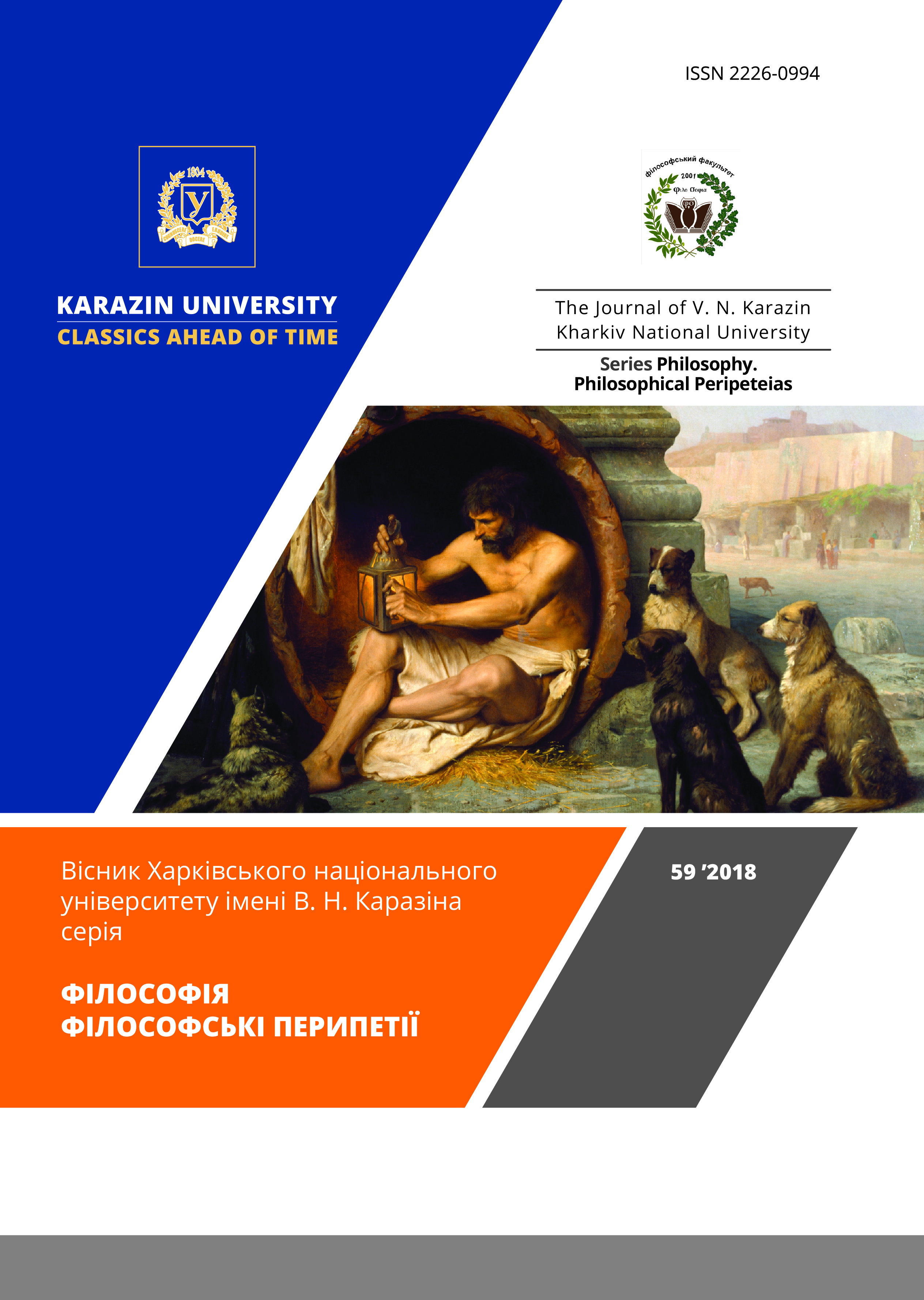GESTURE AS THE FIRST METAPHOR OF NON-VERBAL COMMUNICATION
Abstract
Non-verbal speech is a kind of metaphorical colouring of verbal language as it can give the language rich emotional substance as well as to pass the information that word function is not able to give. The metaphor is reflected not only in language but also in thinking and acting. The determination of gesture as the first metaphor is actual in the process of studying the non-verbal language meaning and role in culture, communication and self-knowledge. The metaphor predestination expressed via the gesture or body language consists in transition the hidden internal content of information. Gesture as the first metaphor equivalent creates the effect of maximum presence. Such gestures can be called ontological that means transferring the sense and meaning of event and entitled to be brightly emotionally coloured that makes them universal and clear for any language culture representative. Equivalent gestures are the reflection of that first natural language first people talked before the verbal language barrier appeared. The metaphorical gesture as the most important element of somatic language becomes the important factor in the process of communication allowing to understand the inner spiritual world of communicator. Gesture basis as the first metaphor is the archaic conscience. Gesture as the conscience of the first metaphor allows to discover the psychological and biological elements of anthropology. The body language was the natural language of communication. Imitating the nature and many natural phenomena the human being was understood by all his tribe members. Codified gesticulation as the prototype of metaphorical somatic language is imprinted in painting where artist by means of portrayed gestures transferred not only the human being spiritual state but also the spirit of the age. The gesture metaphoric is inherent in national culture. Knowing the national character it is not difficult to recognize the ethnical origin of communicator via gesture communication. The national metaphoric of gesture language is attributed to historic and cultural processes which determine the worldview and communication style. However in case of body and gesture language expression in national character their culture conditionality and dissimilarity should be pointed out. The gesture basic purpose in communication is the manifestation and presentation of human being inner world and spiritual condition. One of gesture functions as the first metaphor is its symbolism. The gesture language semiology is present in different spheres of communicative process: from the professional gestures symbols up to domestic ceremonial esthetics. Gestures-symbols are divided into universal for all the cultures and specific ones which are understood only by certain subculture as the language of hidden information. Gesture as the first metaphor serves to universalization of non-verbal communication and encourages the communication enriching and gives it colouring, emotionality and the unity of perception of transmitted information.
Downloads
References
/References
Encyclopedia of Signs and Symbols. Gesture. (2019). Retrieved from http://www.symbolarium.ru/index.php?title=Жест&mobileaction=toggle_view_mobile. (In Russian).
Isupov, K. G. (2007). Mythological Consciousness. In K. G. Isupov, Cosmos of Russian
Self-Consciousness: Isupov’s Dictionary of Russian Culture. Saint Petersburg. (In Russian).
Kreydlin, G. E. (2002). Non-verbal Semiotics: Body Language and Natural Language. Moscow: Novoe lyteraturnoe obozrenye. (In Russian).
Lakoff, G., & Johnson, M. (2004). Metaphors We Live By. (A. Baranov, A. Morozova, Trans.). Moscow: Editorial URSS. (Original work published 1980). (In Russian).
Mauss, M. (1996). Society, Exchange, Personality. Works on Social Anthropology. (A. Hoffman, Trans.). Moscow: Oriental Literature. (In Russian).
Stanislavskyi, K. S. (1948). What is an Action? In K. S. Stanislavskyi, About the Art of the Director: Collected Works (pp. 141–143). Kyiv. (In Ukrainian).
Sukharev, V. A., & Sukharev, M. V. (1997). Psychology of Folks and Nations. Donetsk: Stalker. (In Russian).
Tymoshenko, M. A. (2009). The Human Body as a Cultural Form. (PhD thesis). Nizhny Novgorod: Nizhny Novgorod State University of Architecture and Civil Engineering.
Yampolskiy, M. V. (1994). The Gesture of the Executioner, Speaker, Actor. Yearbook of the Laboratory for Post-Classical Studies of the Institute of Philosophy of the Russian Academy of Sciences (pp. 21–67). Moscow: Ad Marginem’93. (In Russian).
Исупов К. Г. Сознание мифологическое. Исупов К. Г. Космос русского самосознания: Словарь русской культуры Константина Исупова. СПб., 2007. С. 115–118.
Крейдлин Г. Е. Невербальная семиотика: Язык тела и естественный язык. М.: Новое литературное обозрение, 2002. 592 с.
Лакофф Дж., Джонсон М. Метафоры, которыми мы живем / пер с англ. А. Н. Баранов, А. В. Морозова. М.: Едиториал УРСС, 2004. 256 с.
Мосс М. Общества, обмен, личность. Труды по социальной антропологии / пер. с франц. А. Б. Гофмана. М.: Восточная литература, 1996. С. 242–263.
Станiславський К. С. Що таке дiя? Станiславський К. С. Про мистецтво режиссера: збірка праць. К., 1948. С. 141–143.
Сухарев В. А., Сухарев М. В. Психология народов и наций. Донецк: Сталкер, 1997. 400 с.
Тимошенко М. А. Человеческое тело как культурная форма: дисс. … кандидата философских наук: 24.00.01. Нижний Новгород, 2009. 226 с.
Энциклопедия знаков и символов. Жест [Электронный ресурс]. 2019. URL: http://www.symbolarium.ru/index.php?title=Жест&mobileaction=toggle_view_mobile.
Ямпольский М. В. Жест палача, оратора, актера. Ежегодник Лаборатории постклассических исследований ИФ РАН. М.: Ad Marginem’93, 1994. С. 21–67.
Authors who publish with this journal agree to the following terms:
- Authors retain copyright and grant the journal right of first publication of this work under the terms of a license Creative Commons Attribution License 4.0 International (CC BY 4.0).
- Authors are able to enter into separate, additional contractual arrangements for the non-exclusive distribution of the journal's published version of the work (e.g., post it to an institutional repository or publish it in a book), with an acknowledgement of its initial publication in this journal.
- Authors are permitted and encouraged to post their work online (e.g., in institutional repositories or on their website) prior to and during the submission process, as it can lead to productive exchanges, as well as earlier and greater citation of published work.






3.gif)




